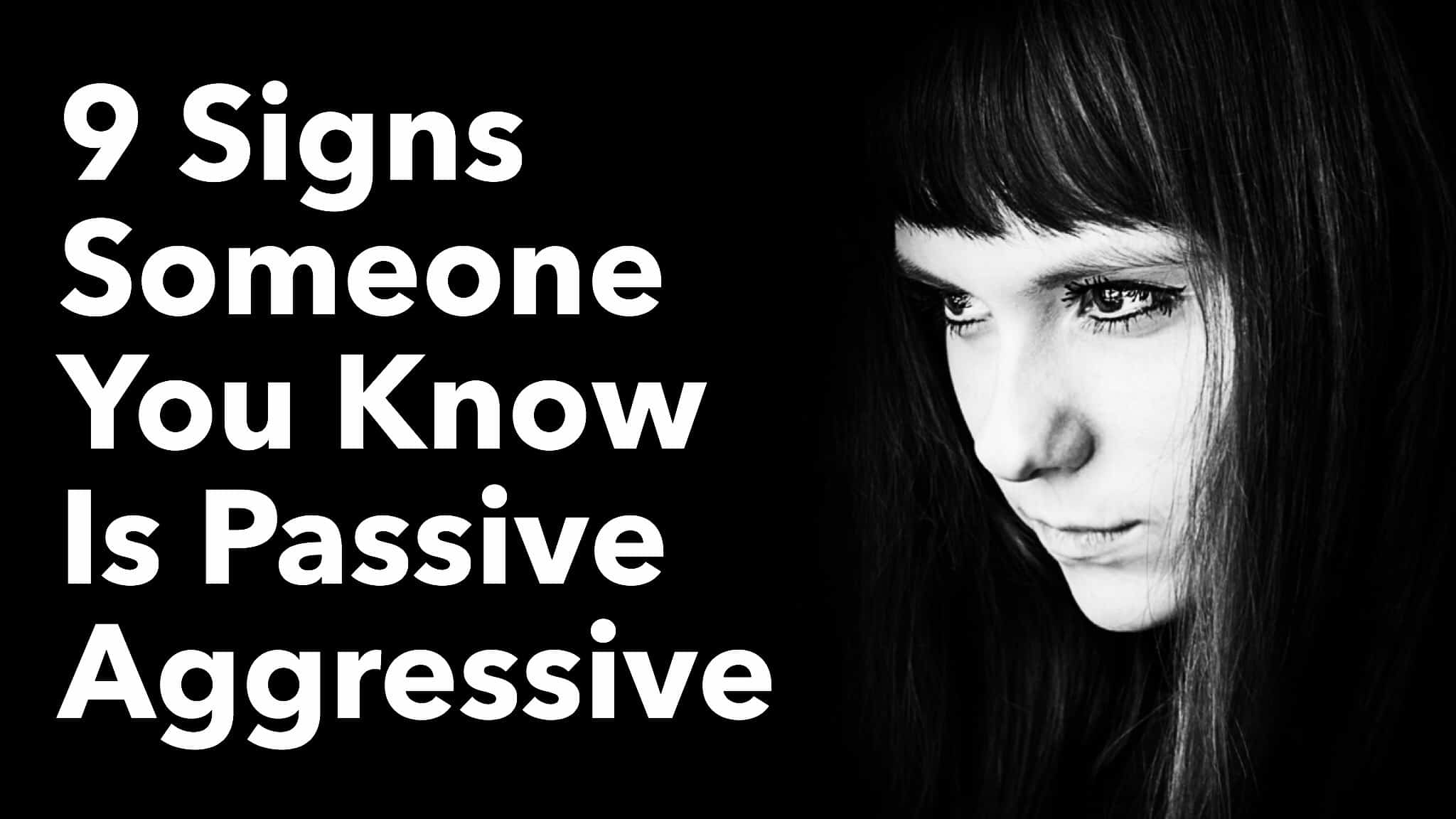Passive aggressive behavior is the indirect expression of hostility, such as through procrastination, controlling, stubbornness, sullen behavior, or deliberate or repeated failure to accomplish request tasks for while one is (often explicitly) responsible. – Wikipedia
“That’s really annoying…”
Passive-aggressive individuals hear these three words often.
Why? Let us count the ways…
- They’re unreasonable to deal with.
- They’re uncomfortable to be in the presence of.
- They don’t express their problems with others directly.
- They repeat, repeat, and repeat. They often do not change their conniving behaviors.
There are plenty of other reasons, but these are the four behaviors most commonly displayed by passive aggressives.
“Why do you act like that?”
Not so long ago, Passive-aggressive personality disorder was a diagnosable condition. Though psychiatrists and psychologists no longer consider it an “official” diagnosis, it’s symptoms are problematic for many.
Perhaps the most bothersome aspect of the behavior is that the individual manifests their anger by stoking the anger of others. As they cannot express their anger constructively, they vicariously do so through others.
The workplace is one area where passive aggressive people have a load of problems. They’ll delay work, escalate issues, and act inefficiently to demonstrate their displeasure. They despise responsibility and will shun commitment whenever possible.
We don’t know for sure the causes of P-A behavior, but experts believe that it’s caused by a combination of genetic and environmental factors. Child abuse, neglect, and harsh punishment may be contributory influences.
Substance abuse and low self-esteem are common in P-A’s.
Regarding treatment, talk therapy has proven to be helpful.
Handling passive-aggressive behavior
Relating to a passive-aggressive person can be a frustrating and challenging experience, with moments of anger and despair aplenty.
The question is, how can we get a good handle on the situation and maintain our emotional and mental equanimity?
Preston Ni, M.S.B.A., the author of How to Successfully Handle Passive-Aggressive People, provides the following five tips.
5 Ways To Deal With Passive Aggressiveness
1. Notice the behavior early
It goes without saying, but the earlier that we discover potential signs of passive-aggression, the better. It’s vitally important that we not excuse the behavior, especially if it’s a person were dating or meeting socially.
Ni recommends the following: “Notice whether the person instigates additional passive-aggressive behavior towards you…Once you identify a clear pattern of passive-aggressive behavior, its time to determine what type of relationship you want to have…if you desire (any) relationship at all…”
2. Avoid being the trigger
In close and intimate relationships, many passive-aggressives choose a partner with whom he or she can re-enact power struggles – and often do so unconsciously.
Ni advises the following: “Crucially, ask yourself: ‘Am I unknowingly giving into, encouraging, or eliciting my partner’s passive-aggressive behavior?”
He gives an example: unwittingly inviting your partner to re-engage in their past battles, by acting in a domineering fashion. We’ll get into why this is counterproductive later on.
3. Set boundaries and repercussions
Passive-aggressive individuals are quite covert about their thoughts and behaviors. When you notice a pattern of passive aggressiveness and confront the individual about these observations, you can expect denial, excuse making, and deflection of blame.
But that doesn’t mean you should tolerate it.
“The ability to identify and assert consequence is one of the most powerful skills we can use to ‘stand down’ a passive aggressive person,” Ni says. Setting boundaries and the consequences of violating those limits may compel the individual to act more cooperatively.
4. Give the person a chance to solve the problem
Some passive aggressive people believe they do not have a voice and that their input is ignored. If the situation is appropriate, it may be helpful to invite the person to discuss decisions of consequence.
Soliciting the person’s input may be all that they need. If the dialogue is amicable and leads to constructive changes, you may have just found the panacea.
On the flip side, if the person refuses to lower their guard and continues to act up, do not take the behavior personally. Politely disengage from the conversation and move on.
5. Act with poise and composure
As mentioned, passive-aggressive people (mistakenly) see themselves as victims. As a result of this perceived maltreatment, the person will interpret any display of anger, discontentment, or frustration as an affront.
The best thing to do is act with poise and composure. Difficult though it may be, taking your emotions out of the situation may be the best solution.
Final Thoughts
Regardless of a person’s shortcomings, it is always our recommendation to first recognize him or has as a human being.
On an individual level, it is essential that we do two things: (1) never mistreat anyone else, and (2) never allow ourselves to be mistreated. Compassion and respect is a must, as is setting boundaries and consequences.
Unfortunately, our world is full of individuals who seem to test our sanity – and the sooner we acknowledge this fact, the easier it will be to acquire and maintain a peace of mind. We should make every attempt to do just that.



















